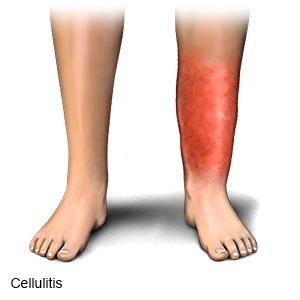
Cellulitis is an infection of the deep layers of the skin. It can occur at any age.
Common symptoms of cellulitis:
- A spreading area of redness of the skin, which is usually warm to touch
- Pain or discomfort at the site
- Swelling of the affected area may occur
- Fever may be present
- They may have swollen glands (lymph nodes) near the area of infected skin.



